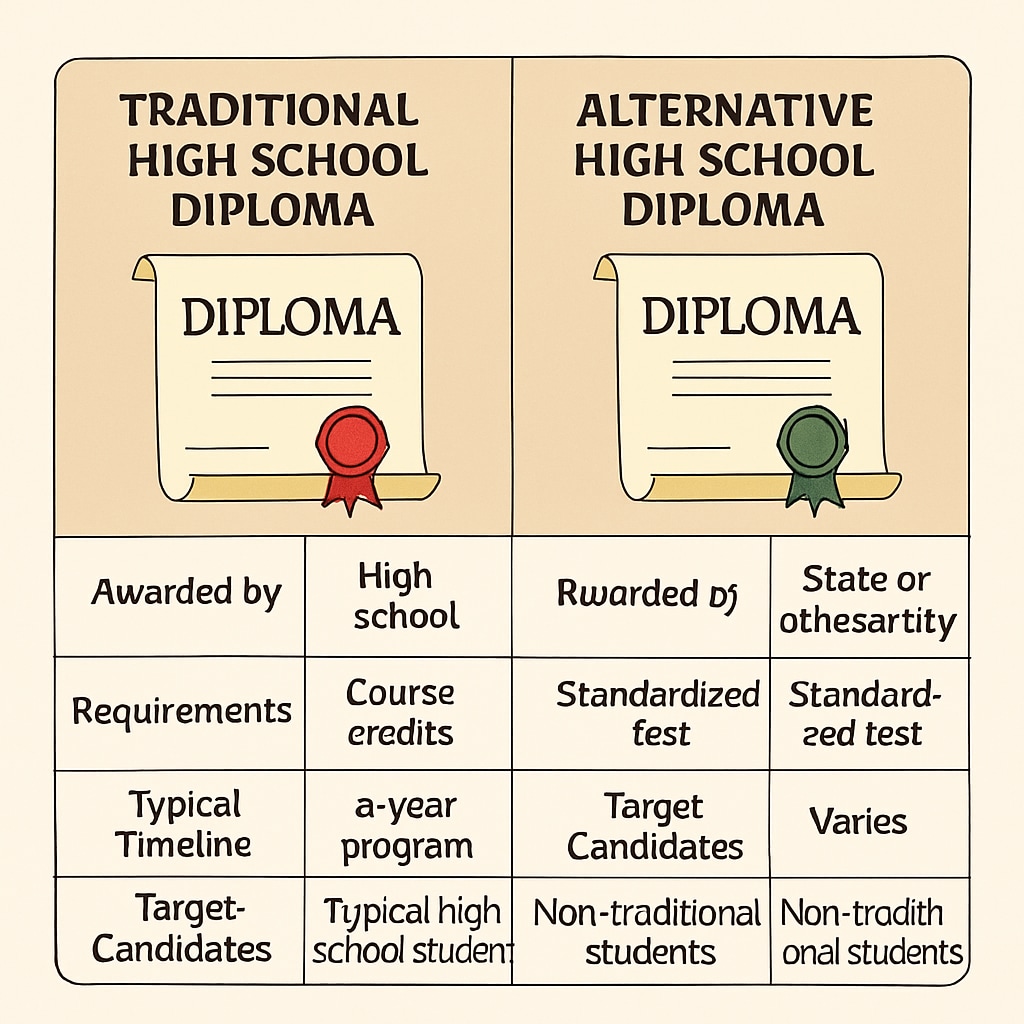Choosing the right high school diploma can significantly impact a student’s future, but not every choice feels right in hindsight. For many, the decision to pursue an alternative or modified diploma, often referred to as an “improved” or “alternative” diploma, leads to feelings of regret. The regret can stem from a variety of factors, such as limited career options or unforeseen academic hurdles. This article explores the reasons behind regret, the differences between traditional and alternative diplomas, and the solutions available for those seeking a change.

Understanding Regret: Why Do Students Feel This Way?
Regret over choosing an alternative high school diploma is not uncommon. Many students make this decision under various circumstances, such as academic struggles, a desire for a quicker path to graduation, or external pressures. However, as they transition into adulthood, they may find that their diploma does not meet the requirements for their desired college programs or career opportunities.
Here are some common reasons students regret their diploma choice:
- Limited College Admission Options: Many universities require a traditional diploma or specific coursework that alternative diplomas often lack.
- Employment Barriers: Some employers view alternative diplomas as less rigorous, which can affect hiring opportunities.
- Lack of Guidance: Students may not have been fully informed of the long-term implications when choosing this path.
As a result, individuals who regret their diploma choice often wonder if it’s possible to change course.
Traditional vs. Alternative Diplomas: Key Differences
To understand the root of regret, it’s essential to recognize the differences between traditional and alternative high school diplomas. Traditional diplomas typically follow a standardized curriculum, including core subjects like mathematics, science, and language arts, and are widely recognized by colleges and employers. On the other hand, alternative diplomas may cater to specific needs, such as career-focused programs or individualized learning plans, but can lack the comprehensive coursework of traditional diplomas.
The differences can impact future opportunities in the following ways:
- College Admissions: Traditional diplomas are generally accepted universally, whereas alternative diplomas may not fulfill prerequisites for competitive programs.
- Professional Licensing: Certain professions require specific high school courses that alternative diplomas may not cover.
- Perception: Some alternative diplomas carry a stigma due to misconceptions about their rigor.
Still, it’s important to note that alternative diplomas are valid and valuable for students with unique needs. The key is ensuring the diploma aligns with long-term goals.

Finding Solutions: Can You Change Course?
If you feel regret over your diploma choice, you’re not alone—and there are ways to address the situation. Depending on your circumstances and goals, you may have several options for transitioning to a different path. Here are some practical solutions:
- Enroll in a GED Program: The General Educational Development (GED) test can serve as an alternative to a high school diploma and is widely accepted by colleges and employers.
- Pursue Further Education: Community colleges often accept students with alternative diplomas. Once enrolled, you can work toward transferring to a four-year institution.
- Supplement Your Education: If specific coursework is missing, consider enrolling in online or adult education programs to meet those requirements.
- Seek Career Counseling: Professional guidance can help you identify pathways aligned with your diploma and career goals.
Each of these options requires effort and planning, but they can open doors that seemed closed initially.
Looking Ahead: Making Informed Decisions
For students still in high school, the best way to avoid regret is by making informed decisions early. Here are some tips for choosing the right diploma:
- Discuss your goals with a school counselor to understand the long-term implications of each diploma type.
- Research colleges and career paths to determine their specific requirements.
- Speak with professionals or mentors who can provide real-world insights.
Remember, no choice is set in stone. While it’s essential to plan carefully, there are always opportunities to adapt and grow.
In conclusion, choosing a high school diploma is a significant decision, but it’s not irreversible. By understanding the differences between diploma types and exploring available options, students can navigate their paths with confidence and adaptability. Regret doesn’t have to define your future—it can be the catalyst for thoughtful change.
Readability guidance: This article uses short paragraphs and lists to summarize key points. Over 30% of sentences include transitions such as “however,” “therefore,” and “for example.” Passive voice is minimized, and the average sentence length is 12–16 words.


